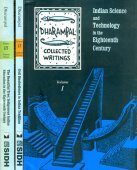Fake: 1 definition
Introduction:
Fake means something in Hinduism, Sanskrit. If you want to know the exact meaning, history, etymology or English translation of this term then check out the descriptions on this page. Add your comment or reference to a book if you want to contribute to this summary article.
In Hinduism
Shaktism (Shakta philosophy)
Source: ORA: Amanaska (king of all yogas): (shaktism)That which is Fake (i.e., being devoted to fake observances) are denoted by the Sanskrit term Kalpita, according to the 17th century Kaulagajamardana (“crushing the Kaula elephant”) authored by Kāśīnātha or Kṛṣṇānandācala.—Accordingly, [as Īśvara said to Pārvatī]: “Listen, O Pārvatī, I shall give a critique of the Pāṣaṇḍas. Knowing this, a wise man is not defeated by them. Those devoted to fake observances (kalpita-ācāra-nirata); those who rebuke the religion of the Vedas; those who have fallen from caste and religious duties; those who have erred and think themselves learned, they are [all] called Pāṣaṇḍas [because] they act contrary to [true] religion. They fall into a terrifying hell until the end of the world. [...]”

Shakta (शाक्त, śākta) or Shaktism (śāktism) represents a tradition of Hinduism where the Goddess (Devi) is revered and worshipped. Shakta literature includes a range of scriptures, including various Agamas and Tantras, although its roots may be traced back to the Vedas.
See also (Relevant definitions)
Starts with: Fake observance.
Query error!
Full-text (+30): Pusigalega, Emginanya, Kumtumaddu, Avastavik, Avastavika, Husikalaga, Khottinanya, Kottitana, Khottitana, Fake observance, Kuyogin, Kalpita, Kalpitacara, Khotti, Kalpitacaranirata, Khandaka, Rumassala, Manuja, Pakhanda, Bhranta.
Relevant text
Search found 60 books and stories containing Fake; (plurals include: Fakes). You can also click to the full overview containing English textual excerpts. Below are direct links for the most relevant articles:
Tiruvaymoli (Thiruvaimozhi): English translation (by S. Satyamurthi Ayyangar)
Pasuram 5.1.7 < [Section 1 - First Tiruvaymoli (Kai ar Cakkarattu)]
Pasuram 6.4.3 < [Section 4 - Fourth Tiruvaymoli (Kuravai aycciyarotu)]
World Journal of Pharmaceutical Research
Spurious drugs (a brief review) < [2023: Volume 12, January special issue 2]
A critical study on the merits, demerits, and societal impact of demonetization. < [2018: Volume 7, April issue 7]
National drug policy in nigeria, 1985-2015 < [2015: Volume 4, June issue 6]
Maha Buddhavamsa—The Great Chronicle of Buddhas (by Ven. Mingun Sayadaw)
Part 1 - Singular Opportunity of Living in an Age when a Buddha appears < [Chapter 2 - Rare Appearance of a Buddha]
The Malaysian Journal of Medical Sciences
Saffron: A Look from the Customer in Vietnam < [v.30(2): 1–184 2023 Apr]
Impact of Social Media on COVID-19 Health Knowledge in Malaysia < [v.28(3): 1–161 2021 Jun]
Communicating Science: A Shared Responsibility < [v.25(5): 1–161 2018 Sep]
International Ayurvedic Medical Journal
Ancient medical ethics and present scenario < [2016, Issue II February]
SAMSKARAH KARANAM MATAM WSR to Rasaparpati < [2023, Issue 10. October]
Controversy in medicinal plants: a review < [2017, Issue VII, July]
Shock (Story By Khaja Nizamuddin) < [July – September, 2005]
Despair < [January – March, 1985]
The Middle Class < [January – March, 1980]
Related products
